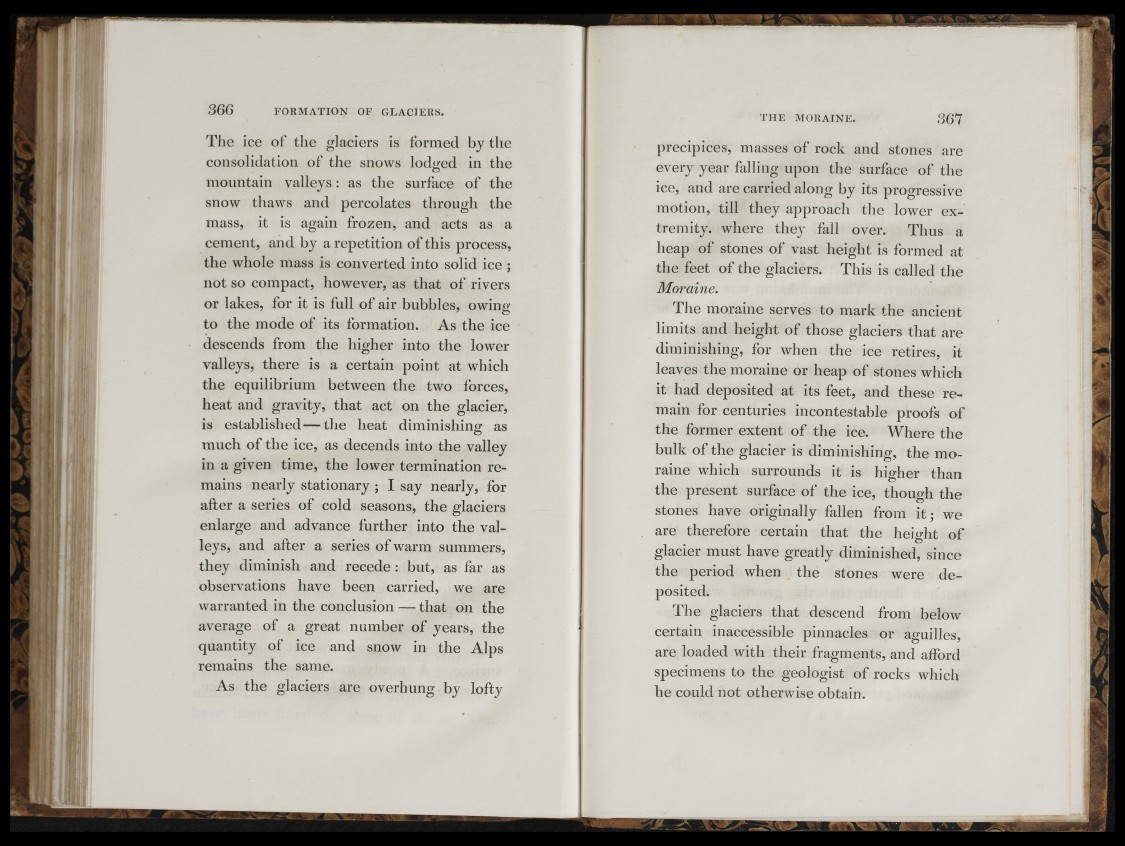
The ice of the glaciers is formed by the
consolidation of the snows lodged in the
mountain valleys: as the surface of the
snow thaws and percolates through the
mass, it is again frozen, and acts as a
cement, and by a repetition of this process,
the whole mass is converted into solid ice ;
not so compact, however, as that of rivers
or lakes, for it is full of air bubbles, owing
to the mode of its formation. As the ice
descends from the higher into the lower
valleys, there is a certain point at which
the equilibrium between the two forces,
heat and gravity, that act on the glacier,
is established— the heat diminishing as
much of the ice, as decends into the valley
in a given time, the lower termination remains
nearly stationary ; I say nearly, for
after a series of cold seasons, the glaciers
enlarge and advance further into the valleys,
and after a series of warm summers,
they diminish and recede : but, as far as
observations have been carried, we are
warranted in the conclusion — that on the
average of a great number of years, the
quantity of ice and snow in the Alps
remains the same.
As the glaciers are overhung by lofty
T H E M O R A IN E . 367
precipices, masses of rock and stones are
every year falling upon the surface of the
ice, and are carried along by its progressive
motion, till they approach the lower extremity.
where they fall over. Thus a
heap of stones of vast height is formed at
the feet of the glaciers. This is called the
Moraine.
The moraine serves to mark the ancient
limits and height of those glaciers that are
diminishing, for when the ice retires, it
leaves the moraine or heap of stones which
it had deposited at its feet, and these remain
for centuries incontestable proofs of
the former extent of the ice. Where the
bulk of the glacier is diminishing, the moraine
which surrounds it is higher than
the present surface of the ice, though the
stones have originally fallen from it; we
are therefore certain that the height of
glacier must have greatly diminished, since
the period when the stones were deposited.
The glaciers that descend from below
certain inaccessible pinnacles or aguilles,
are loaded with their fragments, and afford
specimens to the geologist of rocks which
he could not otherwise obtain.